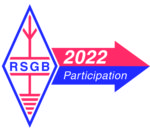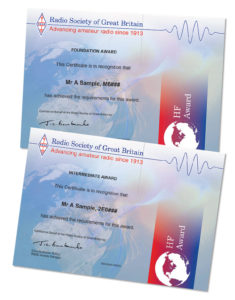An active and thriving amateur radio community is what we need!
 Part of our strategic goal for 2022 is to have an active and thriving amateur radio community. I’m going to explain this a little more and pose some questions for you, the Members.
Part of our strategic goal for 2022 is to have an active and thriving amateur radio community. I’m going to explain this a little more and pose some questions for you, the Members.
The Strategy’s narrative says this about the 2022 goal: “The inescapable truth is that the amateur radio community is ageing and we need to seek out and encourage new people if that community is to thrive. We also need it to be active to show that amateur radio is not only alive but healthy and vibrant; a strong justification for our continued use of the wireless spectrum.” So where do we go to seek out new people and how do we plan to encourage them to join us?
The Society has made a real effort to give youngsters reasons to get involved. Through supporting initiatives like Tim Peake’s Principia mission, Jamboree on the Air, Thinking Day on the Air and Youngsters on the Air (YOTA), we have shown that amateur radio can be fun and educational. Peter Barnes, M0SWN who was one of the UK’s YOTA 2017 team members, has since gone on to Swansea University and has been busy re-starting the amateur radio club there, affiliating it to the RSGB and participating in YOTA month. So the events mentioned above act as springboards not only for youngsters to develop their own amateur radio interests but also to draw others in.
I was asked at the Convention “But what are you doing to attract older newcomers?” We have a promotional video in the pipeline intended to mirror the 21st Century Hobby video (which is aimed at youngsters) to publicise amateur radio to a more mature audience. The idea is to show a range of amateur radio activities, demonstrate how they support lifelong learning and appeal to people whatever their skills and interests.
“Where do we go to seek out new people and how do we plan to encourage them to join the amateur radio community?”
However, finding the more mature audience is a challenge – some have suggested SAGA, the University of the 3rd Age (U3A), and the Men-In-Sheds movement. We’ll pursue those, but has your club managed to tap into a new source of older newcomers?
Turning to the ‘active’ part of the 2022 goal, how can we show we are using our spectrum to best advantage?
 One way is to have lots of people chasing awards. Chris Burbanks’ revival of the RSGB Awards scheme continues to make good progress with 64 successful claims from five continents processed during 2017. Acceptance of LoTW (Log Book of the World) confirmations as well as traditional QSL cards has proved very popular and made a significant impact in reducing the time span for someone working towards an Award. The IARU Region 1 Award has proved the most popular as it covers member countries in Europe, Africa and near Asia – the base level is confirmed contacts with just 40 member countries, making it quite achievable.
One way is to have lots of people chasing awards. Chris Burbanks’ revival of the RSGB Awards scheme continues to make good progress with 64 successful claims from five continents processed during 2017. Acceptance of LoTW (Log Book of the World) confirmations as well as traditional QSL cards has proved very popular and made a significant impact in reducing the time span for someone working towards an Award. The IARU Region 1 Award has proved the most popular as it covers member countries in Europe, Africa and near Asia – the base level is confirmed contacts with just 40 member countries, making it quite achievable.
There are revitalised awards specifically for Foundation and Intermediate licence holders – could you encourage newcomers to those licence levels to spend a bit more time on the air and increase band activity?
For those who are a little more energetic, how about hosting an Amateur Radio Direction Finding (ARDF) event? Bob Titterington’s team are always keen to help newcomers get involved and they have equipment Affiliated Clubs can borrow. Bob is proposing to run a series of monthly events from March to November, so look out for those and give it a go.
There are lots of other audiences we need to reach and ways of being active but these are just examples that you and your clubs could focus on to help implement the Strategy by building that thriving and active community.
Steve Hartley, G0FUW
Board Director
Category: RSGB Notices, RSGB Strategy 2022










